How to experience the absolute best mother earth has to offer! The most awe-invoking and inspiring lakes are natural wonders existing all over the globe. Lakehub.com recently had the pleasure to learn about some of the world’s most beautiful lakes ever! It is like the water is always prettier on the other side of the world.
People who love lakes and travel to foreign lakes get to see the inner natural beauty of other countries for the most part. Some foreign lakes are busy. Traveling the world are the most exciting and most entertaining trips millions of people around the globe dream of and go on when they can afford it.
Here, Texas Outside describes some of the most famous, unique, stunning, and interesting lakes in the world. The serenity, flora and fauna, wildlife, and charming cities, towns, and villages surrounding these lakes offer the best cultural experiences ever found and bring lasting memories to visitors.
What Are the Most Famous Lakes in the World?
We researched lakes all over the world, thanks to Conde Nast, research, and travel bloggers, we found ourselves wanting to globe trot to these remote and not so remote lake destinations. The following are some of the most famous lakes in the world.
- Lake Baikal in Russia
- Lake Victoria in Africa (Kenya, Uganda and Tanzania)
- Loch Ness in Scotland, UK
- Lake Bled in Slovenia
- the Dead Sea in Israel and Jordan
- Laguna Colorada in Bolivia
- Lake Tanganyika in Africa (Tanzania, Zambia and the Congo)
- Crater Lake in Oregon, USA
- Lake Geneva in Europe (Switzerland and France)
- Hutt Lagoon in Australia
- Lake Titicaca in South America (Bolivia and Peru)
- Attabad Lake in Pakistan
- Lake Nakuru in Kenya
- Lake Como in Italy
- Lake Atitlán in Guatemala
- Moraine Lake in Canada
- Lake Bacalar in Mexico
According to Conde Nast, a global media parent company with one of the best-known travel information companies in the world, the top ten lakes and the most beautiful lakes in the world are all over the globe. Amazing lakes with hypnotizing features and wide spectrums of colors attract visitors in droves. We choose to highlight the following ten lakes.
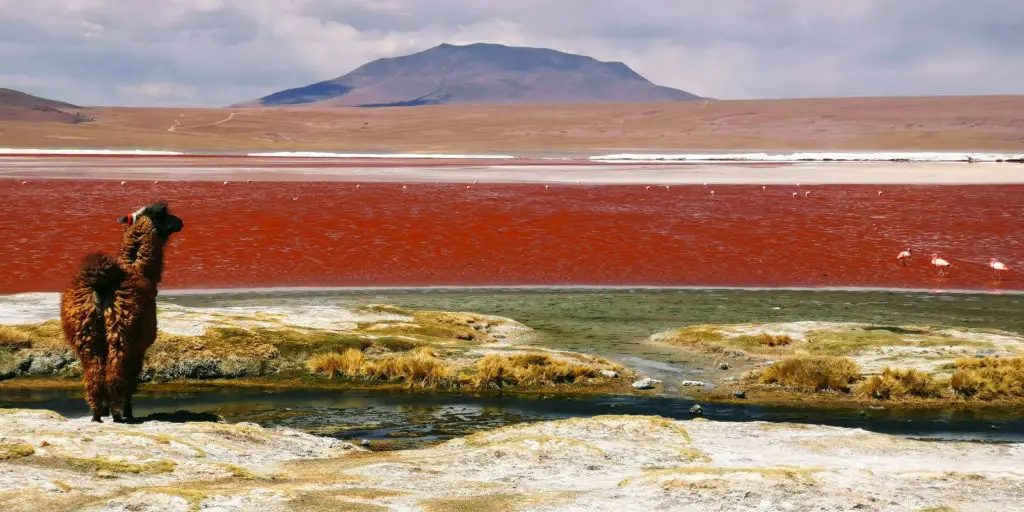
Laguna Colorada, Bolivia
Laguna Colorada sits high in the Andes Mountains. Its crimson colored water gets its hue from red algae, but local folklore attributes its water’s color from the blood of the gods. Laguna Colorada is beautiful and shallow. Between December and April, it is full of pink flamingos.
Laguna Colorada is located in southwestern Bolivia about ten miles from the Peruvian border between the dusty tracks of the Siloli Desert and the Eduardo Avaroa Andean Fauna National Reserve. It lies in a large high-altitude desert plain of smoking volcanoes, and rock formations reminiscent of Salvador Dali’s paintings.
A unique landscape of salt flats with breathtaking views surround that attract photographers and nature lovers. Laguna Colorada’s color intensity changes with the angle of the sun and the time of year. Andean flamingos, Chilean flamingos, and James’s flamingos call this lake home along with llamas, vicunas, and a range of bird species.
Visitors can access Laguna Colorada as part of multi-day tours of the Salar de Uyuni region, and other sites such as the Salar de Chiguana, hot springs, and colorful lagoons. local Indigenous communities hold a deep connection to the land and its natural resources. Visitors can explore the nearby Dali Desert, with its surreal rock formations, and the Polques Hot Springs.
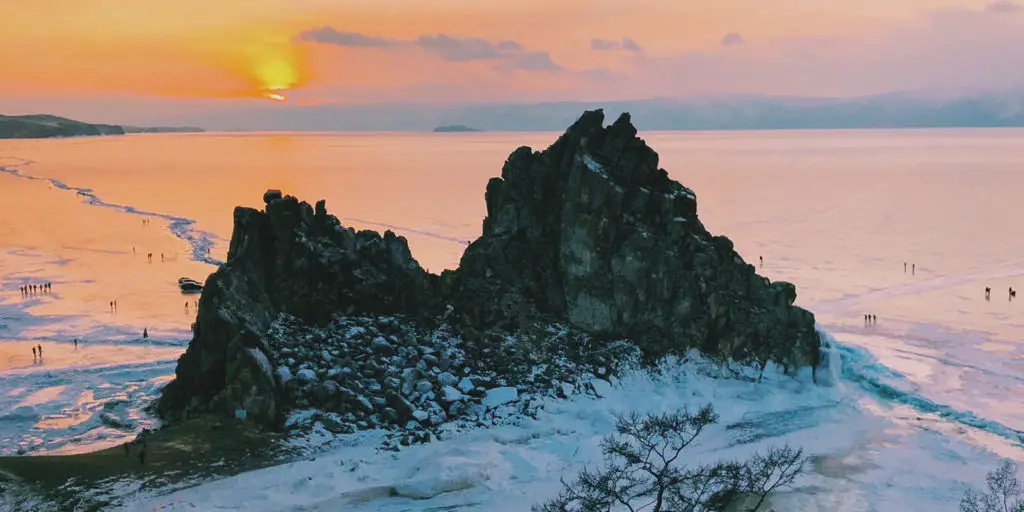
Lake Baikal, Russia
Lake Baikal, spelled Ozero Baykal in Russian, is said to be the world’s deepest lake and the world’s oldest freshwater lake. It is 20 to 25 million years old. Lake Baikal is located in the southern part of eastern Siberia, within the republic of Buryatia and the Irkutsk Oblast Province of Russia.
Lake Baikal is a mile deep in some parts. Mountains that rise over 6,600 feet surround it. Breaks in earth’s crust produce hot mineral springs in the area and occasional earthquakes. It is 395 miles long, its shoreline runs 1,300 miles, and it contains over 45 islands. Over 330 rivers and streams flow into it, but its only outlet is the Angara River.
Lake Baikal’s visibility can reach up to 130 feet (40 meters). Endemic organisms, like tiny plankton help keep its water clear. Approximately 1,700 species of plants and animals live at Lake Baikal. Two-thirds are unique to the lake. Lake Baikal freezes over with a layer of ice up to 6.5 feet (2 meters) thick.
Lake Baikal’s clear ice designs beautiful surreal formations and creates deep cracks and transparent sheets, revealing crystal-clear blue waters. Russian and indigenous Siberian cultures refer to Lake Baikal as the “Sacred Sea” and believe it has spiritual powers.Lake Baikal is accessible from the city of Irkutsk or the town of Listvyanka on the lake’s western shore.

Lake Bled, Slovenia
Lake Bled, one of Slovenia’s most popular destinations, boasts vistas of the Julian Alps surrounding it, emerald-colored waters that change with the time of day and seasons, the most popular island in Slovenia, and thousands of daily visitors.
Folklore attributes its origin to fairies because the sheep were eating the soft grass, fairy dance floor. The shepherds refused to protect their dance floor, so the fairies created Lake Bled. Bled Castle, perched on a steep cliff overlooking the lake and dating back to the 11th century, is Slovenia’s oldest castle.
Blejski Otok (Bled Island), an iconic island, is less than one acre in size with the 17th century Assumption of Mary Church and a few buildings. This church has a wishing bell that grants a wish to anyone who rings it, but visitors have to climb 99 steps to reach the church and bell.
A well-maintained path circles the lake offers visitors a stroll or bike ride around its perimeter. The trail is about 3.7 miles (6 kilometers) long. It offers striking views of the lake, island, castle, and the nearby Julian Alps and Karavanke mountain range. Lake Bled is also known for its thermal springs and several spa resorts around the lake.
Check out the Bled cream cake (kremna rezina served at local cafes. Boat, swim, and picnic in summer, enjoy stunning fall foliage its romantic winter wonderland, or springs wildflowers and lush greenery. Lake Bled is about a 45-minute drive from Ljubljana, Slovenia’s capital, and is easily accessible by car, bus, or train.
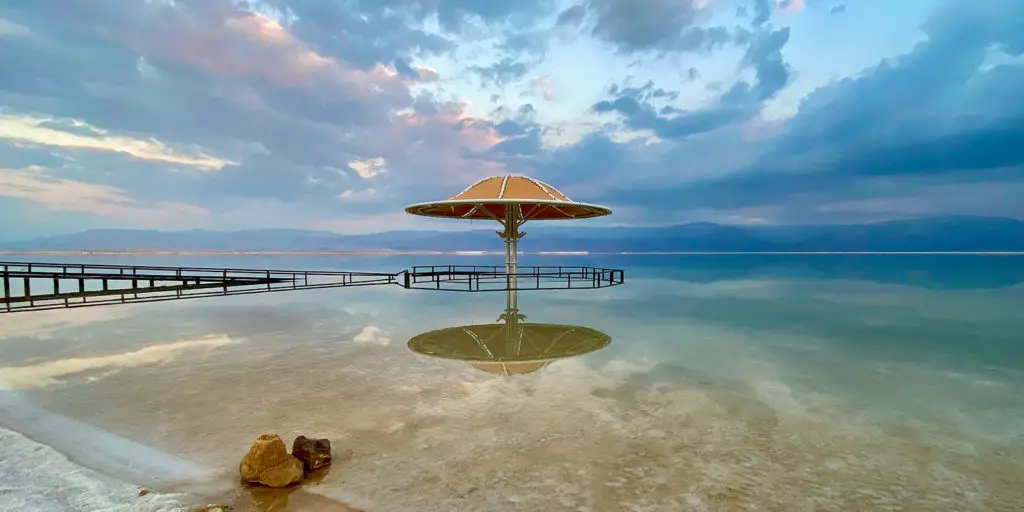
The Dead Sea, Israel and Jordan
The Dead Sea, on the borders of Israel and Jordan, is a saline lake. Mountains lined with palm trees surround it, and rippled salt deposit strips run along its shores. The Dead Sea is an intriguing phenomenon. The only living things in the Dead Sea are microorganisms and algae.
Turquoise water colors the Dead Sea. It has almost ten times the salt as seawater. Its salty water contains healing properties. It is a popular destination for treating skin conditions, like acne, psoriasis, cellulite, muscle aches, and arthritis. The Dead Sea lies in a vast desert, and the searing hot climate evaporates huge quantities of water. It is the largest free spa in the world.
Turquoise waters contrast with the surrounding white salt deposits, the Judean Desert, and the Moab Mountains that witness bright sunlight almost year-round. The Dead Sea’s rich Biblical history influenced the region’s cultural traditions. The Dead Sea Scrolls were found at the nearby Masada fortress, Ein Gedi oasis, and Qumran Caves.
The Dead Sea lies at the lowest land elevation on earth, and this contributes to its climate and healing features. The Dead Sea has been rapidly shrinking over the last several decades due to water diversion from the Jordan River, its main source, and mineral extraction.
The Dead Sea is easily accessible from both Israel and Jordan. The closest and most affordable destination to the Dead Sea from Amman, Jordan. visitors can access the Dead Sea from Ein Bokek and Kalia Beach. On the Jordanian side, resorts in areas like Sweimeh offer private beaches, spas, and wellness centers.

Crater Lake, Oregon, USA
Crater Lake is about a four-hour drive east from Portland. Crater Lake is the deepest lake in the U.S. at 1,949 feet deep and known as deep water in a sleeping volcano. A caldera rim surrounds Crater Lake. A caldera is a large volcanic crater. Sweeping panoramic vistas, ponderosa pine forests, and amazing meadows in summer surround it. In winter, snow covers its landscape with smoky clouds hovering over the lake.
Crater Lake’s waters are clear with an intense blue hue. Glacial runoff and precipitation are its only sources of inflow. Entering it from the caldera is illegal and dangerous. The only legal place to access and swim at Crater Lake is at its Cleetwood Cove, via Cleetwood Cove Trail, a steep, strenuous hike, and located on East Rim Drive on the northern shore.
Crater Lake;s otherworldly hues change with sunlight and weather. I conic Wizard Island, a volcanic cinder cone, rises in the shape of a wizard’s hat. Visitors can take boat tours to Wizard Island in summer and hike to the top for panoramic views. Crater Lake National Park is open year-round, but many activities are seasonal:
The Phantom Ship is a rocky island that resembles a ghostly ship and formed by hardened lava. Lush old-growth forests are full of amazing flora and fauna of hemlock, fir, pine, black bears, and elk. The lake’s remote location preserves Crater Lake’s ecosystem and kept it significantly untouched by humans.
Crater Lake rises to an elevation of around 6,178 feet (1,883 meters) and witnesses long, snowy winters, annually accumulating 42 feet (500 inches) or more of snow. This heavy snowfall displays a winter fairyland and prevents access the park until summer.
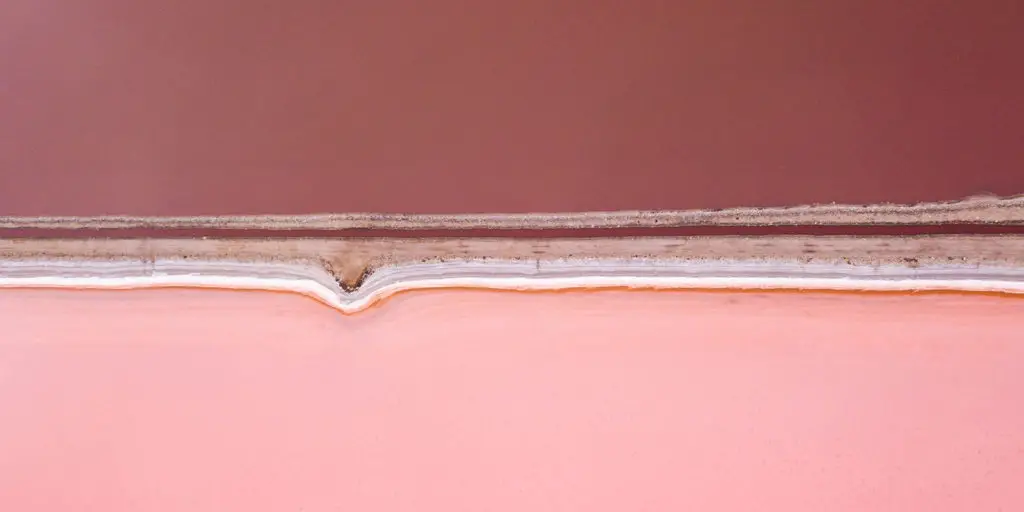
Hutt Lagoon, Australia
Hutt Lagoon, located 280 miles north of Perth in Western Australia on the Indian Ocean coast, is one of Australia’s “pink lakes”. It transforms in color from pink to red to purple depending on the season and the time of day and can appear fluorescent. Early morning is the best time to watch the colors change before your eyes.
Hutt Lagoon owes its changing colors to the presence of the carotenoid-producing algae, Dunaliella salina, a source of B-carotene, a food-coloring agent and source of vitamin A. Hutt Lagoon produces a commercial supply of Artemia parthenogenetica brine shrimp. Artemia is a specialty feed used by prawn and fish farmers and the aquarium fish trade.
Western Australia’s rugged outback and coastal landscapes surrounding Hutt Lagoon create a stark juxtaposition between the pink lake, red earth, and the blue Indian Ocean. Its lakebed’s rich minerals add to its water’s vibrant hues and distinctive geological profile.
Hutt Lagoon is accessible by road and lies approximately 320 miles (515 kilometers) north of Perth and it takes about five hours to drive to it. Visitors stop for aerial pictures to catch the entirety of its vibrant color variations. Swimming is not recommended due to the high salt content. Visitors can walk along the shore.
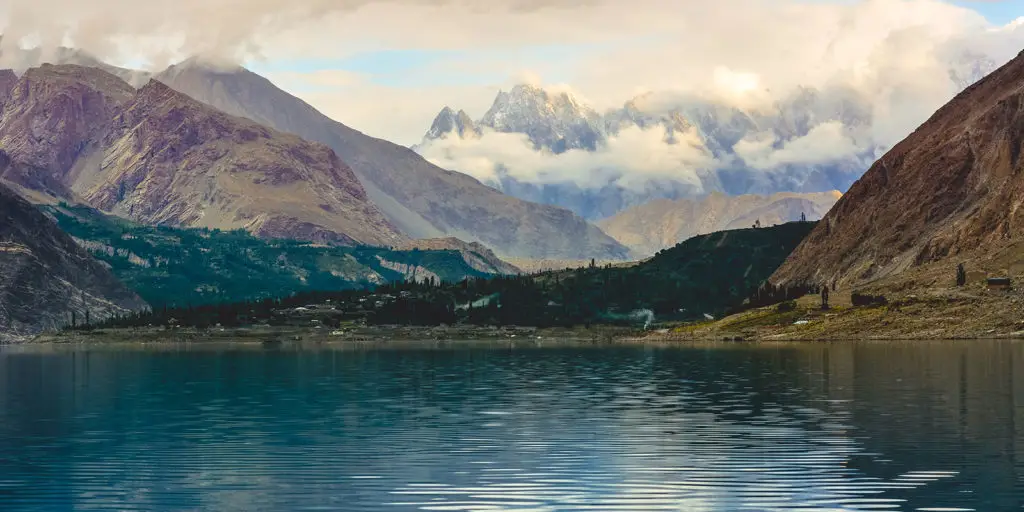
Attabad Lake, Pakistan
In 2010, a landslide buried the village of Attabad in northern Pakistan. It cut off the flow of the Hunza River, and this caused the village to fill rapidly with water. Attabad Lake’s waters are an intense, dazzling turquoise hue. Locals have since built hotels, guesthouses, and campgrounds around the lake, which has become a tourist destination, resulting in their abilities to rebuild their lives.
Attabad Lake is in Hunza Valley in northern Pakistan. Attabad Lake is over 300 feet deep, 13 miles long, and surrounded by the Karakoram Mountains. After the landslide, it only took five months for Attabad Lake to cover the village and its major highway, and inundate 170 houses and 120 shops. Attabad Lake is most popular in the summer months for touring and watersports.
Mineral deposits carried by glacial meltwater color Attabad’s waters, which are especially vivid in sunlight. The surrounding stark, rocky mountains and peaks of the Karakoram Range surround the lake. Visitors enjoy boating, jet skiing, and fishing on the lake and hike and camp around Attabad. Boatmen offer tours in traditional wooden boats.
Visitors will find rich cultural traditions in the nearby villages of Karimabad and Gulmit several villages and warm hospitality. This includes historic sites, traditional markets, and check out Hunza Valley’s fascination cultural heritage.
The best times to visit Lake Attabad are from April to October and it is easy to access from the Karakoram Highway follows parts of the lake. Local tourism businesses boosts small businesses, restaurants, and homestays. Lake Attabad is the hub of Hunza Valley. It attracts thousands of tourists from Pakistan and around the world each year.
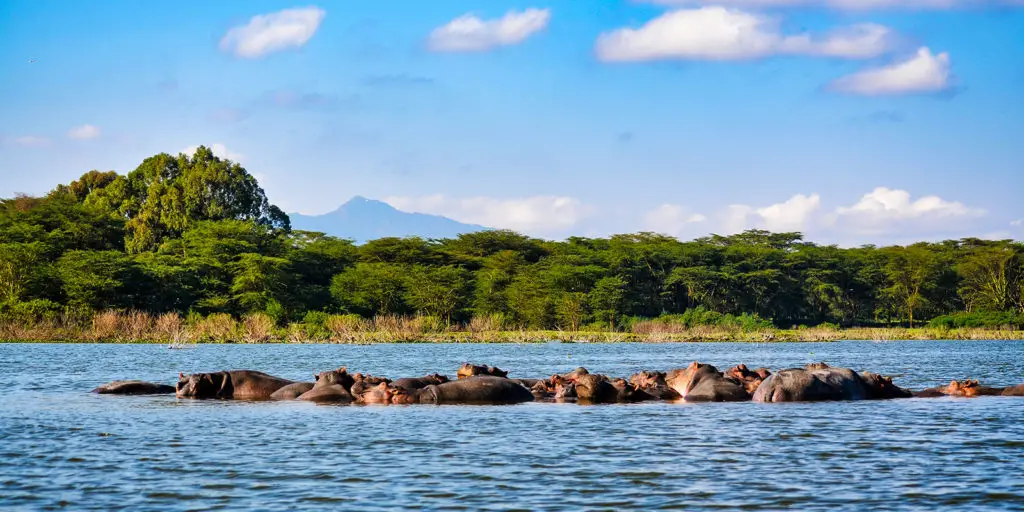
Lake Nakuru, Kenya, Africa
Lake Nakuru, located in the Rift Valley in the middle of eastern Kenya, attracts large numbers of wildlife, including flamingos, leopards, and lions. The Lake Nakuru National Park protects the wildlife and fosters a black and white rhino-stocking program. Human activity threatens the lake and its wildlife. It is about a two-hour drive northeast from Nairobi, Kenya.
Lake Nakuru is surrounded by acacia forests, a grassland savannah, and low-rolling hills, highly saline, one to six feet deep, and supports a biodiversity of aquatic life. When the water is high during wet season, it swarms with thousands of greater and lesser flamingos. Lake Nakuru is a birdwatcher’s paradise, and they look for African fish eagles, Verreaux’s eagles, Goliath herons, kingfishers, a dozen predator birds, and over 400 species of other birds.
Lake Nakuru attracts tourists with contrasts between its azure waters and e lush green landscape. Its water levels significantly because of seasonal rains and evaporation. Its size fluctuates from about 12,500 acres (5,000) hectares to a much smaller size during dry seasons.
the national park attracts tourists, the lake supports fishing, and provides jobs for locals. Rift Valley is rife with cultural heritage and various ethnic groups live and work in the valley. Lake Nakuru is a popular tourist destination and easily accessible from Nairobi at about 99 miles (155 kilometers) away, which is a two-and-half-hour drive.
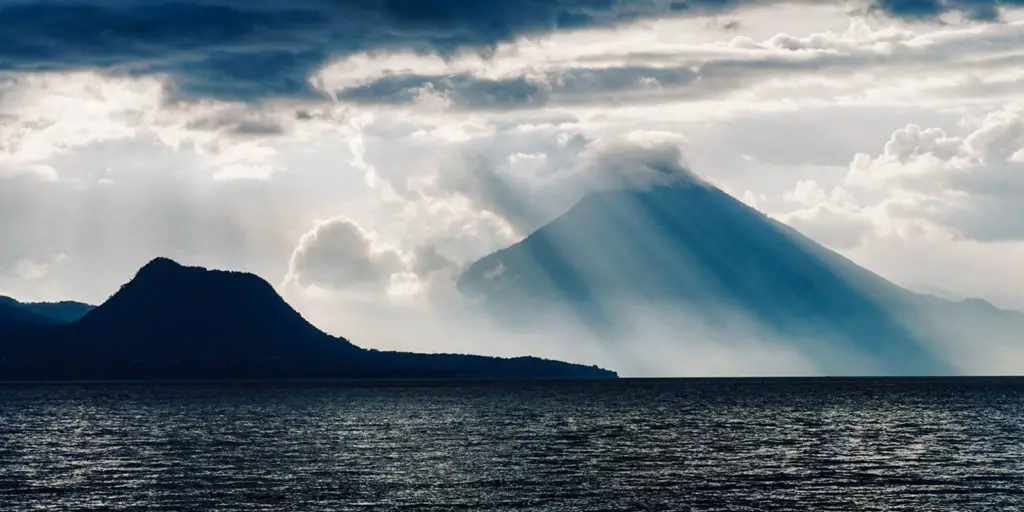
Lake Atitlán, Guatemala
Lake Atitlán sits in the southwestern part of Guatemala in Central America. It is a gorgeous lake in a volcanic crater in the Guatemalan highlands surrounded by dense forests, volcanoes, and Mayan villages. Locals call the volcanoes, Atitlán, Tolimán, and San Pedro “The Three Giants”.
There are seven villages around the lake, and the locals sell beautiful crafts and create festive atmospheres. People describe Lake Atitlán as having an Eden-like beauty. Hiking and mountain biking are extremely popular. Its lush forests provide a habitat for the elusive national bird, the quetzal.
The Audubon Society, certified by Guatemala’s National Institute of Tourism, offers a classic bird watching tour by trained guides to see the quetzal and other birds around the lake. Lake Atitlán’s deep blue waters mirror the surrounding mountains and its dramatic backdrop of volcanoes.
Several indigenous communities of mainly Mayan descendants, like Panajachel, San Pedro La Laguna, Santiago Atitlán, and San Marcos La Laguna share their unique traditions, languages, and crafts with visitors. Lake Atitlán’s complex ecosystem provides diverse flora and fauna and serves as a vital economic boon for local fishermen.
Visitors can take a popular hike up Volcán San Pedro, kayak or paddleboard on the lake, and explore the villages on the shoreline. Locals reguards Lake Lake Atitlán as a sacred lake. Its water and mountains fave rise to local mythology and tradition.
Although Lake Atitlán’s climate is temperate year-round, but the weather changes quickly because of its high elevation of …. and geography. Its dry season is from from November to April. Its rainy season occurs between May to October. Its wet season is lush with greenery and spurs on daily afternoon showers.
Visitors can easily access Lake Atitlán from Guatemala City, which is about 77 miles (124 kilometers) west. Visitors can reach the lake by bus or shuttle service to Panajachel, which a major hub to access and explore the lake. Water taxis take visitors between its villages.
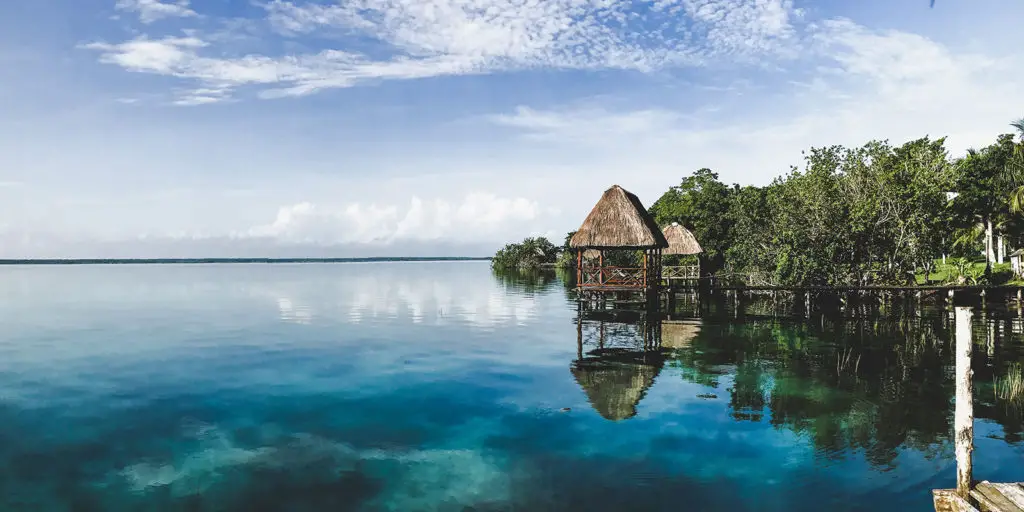
Lake Bacalar, Mexico
Lake Bacalar lies in the extreme south of the state of Quintana Roo, Mexico, near Belize. Its varying shades of turquoise and blue remind visitors of the French Polynesia. Its waters are clear and perfect for snorkeling, diving, and photography. Lake Balacar is known as “The Maldives of Mexico”. The Mayan natives call it Lagoon of Seven Colors. There are loads of places to visit.
The best way to see everything on Lake Balacar is to take a boat tour. There are waterfront restaurants and cafes, upscale resorts, luxury bungalows, and hostels, and car rentals, buses, taxis, and several air travel options. Kayaking and paddleboarding is a great way to see Lake Bacalar. Lake Bacalar also has cenotes, underwater sinkholes filled with freshwater attract visitors, scuba divers, and snorkelers.
Lake Bacalar’s bright blue hues range from dark navy to light turquoise to emerald green. This is the result of the lake’s depth, the types of sediment found at the bottom, and its cenotes. This natural phenomena allows sunlight to penetrate deeply and enhance the lake’s kaleidoscopic appearance. The most popular sinkholes are Cenote Esmeralda and Cenote Cocalitos, known for their clear waters and unique geological features,
Lake Bacalar is 26 miles (42 kilometers) long and about 1.2-miles (2-kilometers) wide at its widest point and one of the largest lakes in the region. Lavish tropical vegetation, freshwater plants, and mangroves flank Lake Bacalar. Visitors to the town of Bacalar will find rich cultural history in colonial architecture, like the Fort of San Felipe, dating back to the 18th century. This fort was a strategically important in battles against pirates.
Famous Lakes FAQ
What Is the Most Famous Lake?
There are too many famous and absolutely awe-inspiring lake destinations. It is extremely subjective to choose one “most famous lake in the world”. It is impossible for one writer to guess which lake is the most famous.
Where Is the Prettiest Lake in the US?
It depends on what people expect from a lake destination, and what is pretty to one may not be pretty to another. Some people love northern cooler climates and others love tropical destinations.
What Is the Most Beautiful Lake in the World?
When we discuss the copious amount of highly varied geological regions found around the globe, there are too many differences and opinions of the meaning of the word beautiful to choose the most beautiful lake in the world. for our readers.
What Are the 5 famous Great Lakes?
The five famous Great Lakes are in Canada and the U.S., Lake Superior, Lake Michigan, Lake Huron, Lake Erie, and Lake Ontario.
What Are the Top 10 Biggest Lakes in the World?
The following is the area that the biggest lakes in the world cover in square miles and square kilometers.
- Caspian Sea: 149190 sq mi 386,400 sq km
- Lake Superior: 31699 sq mi 82,100 sq km
- Victoria: 26828 sq mi 69,484 sq km
- Lake Huron: 23000 sq mi 59,570 sq km
- Lake Michigan: 22300 sq mi 57,757 sq km
- Lake Tanganyika: 32,900 sq mi 32,900 sq km
- Lake Baikal: 12162.sq mi 31,500 sq km
- Big Bear Lake: 12482 sq mi 32,328 sq km
- Lake Nyasa (Lake Malawi): 114645 sq mi 29,694 sq km
- Great Slave Lake: 1030 sq mi 28,568 sq km
What Is the Top 1 Deepest Lake in the World?
Lake Baikal in Siberia is the world’s deepest lake, with a maximum depth of 5,387 feet (1,642 meters).
What Is the Biggest Lake in Earth’s History?
According to many credible scientific sources, the bigglest lake in the earth’s history stretched from the eastern Alps into what is now Kazakhstan. It covered over 2,800,000 square kilometers. Continental plates crashed together approximately 12 million years ago and raised new mountains and created the earth’s largest know lake, the Paratethys Sea.
Climate shifts over the millennia caused the lake to shrink significantly at least four times in its 5-million-year lifetime. Its water levels fell by as much as 250 meters between 7.65 million and 7.9 million years ago. During that largest episode of contraction, the Paratethys Sea lost as much as one-third of its water and more than two-thirds of its surface area.
The Paratethys Sea, shrank and eventually disappeared between 6.7 and 6.9 million years ago.According to Science.org, new studies reveal how the ancient body of water took shape and how surrounding changes helped give rise to elephants, giraffes, and other large mammals that wander the planet today.

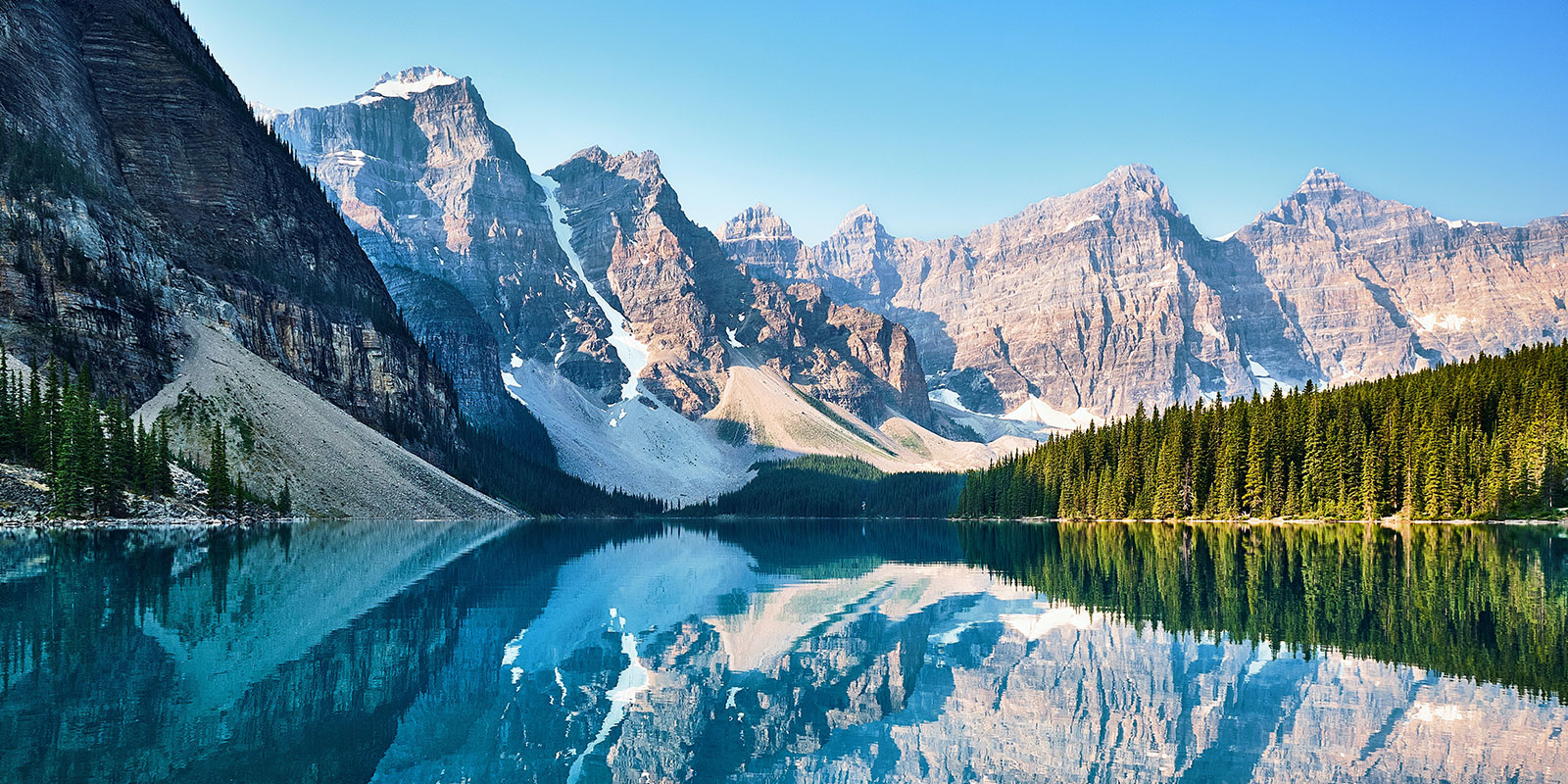






2 Comments